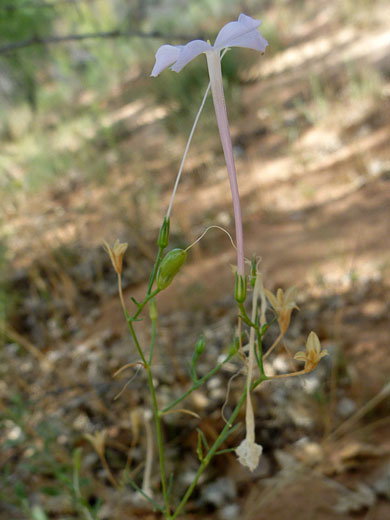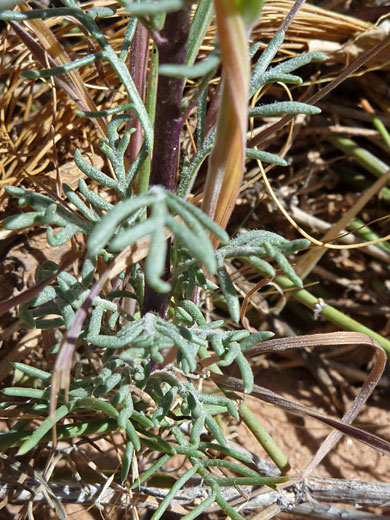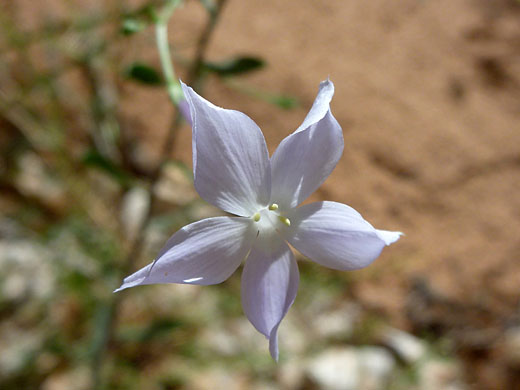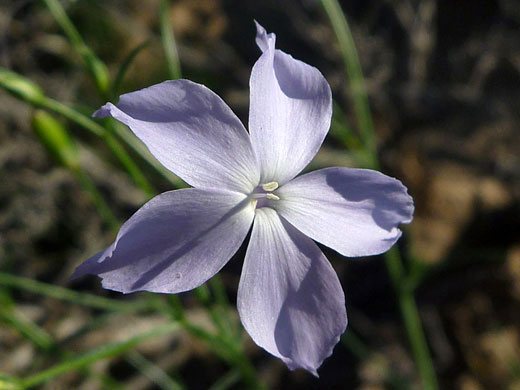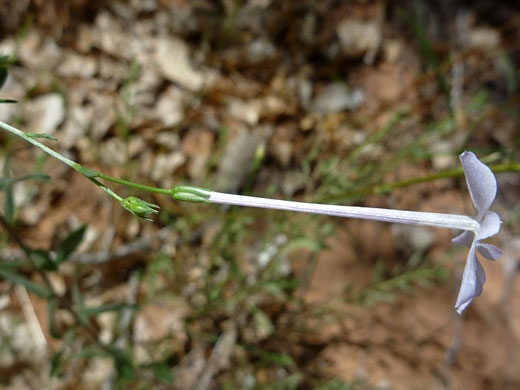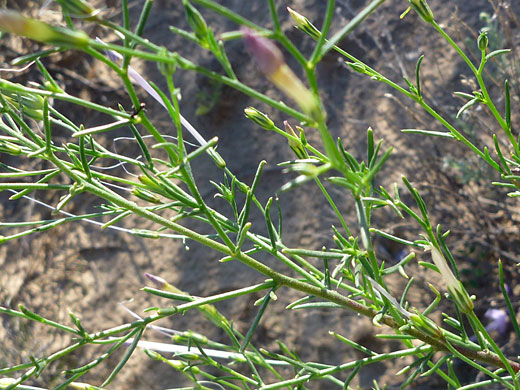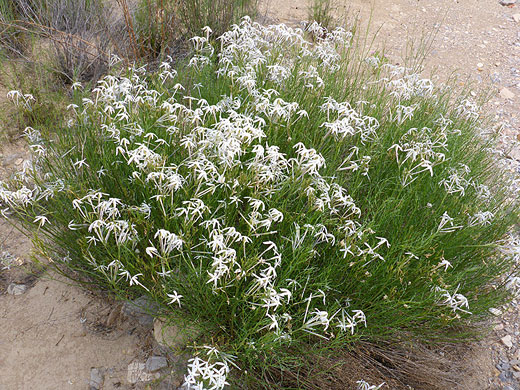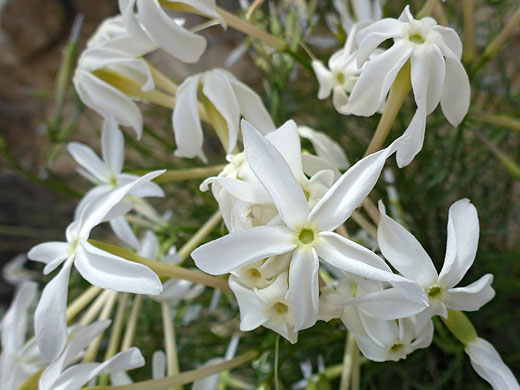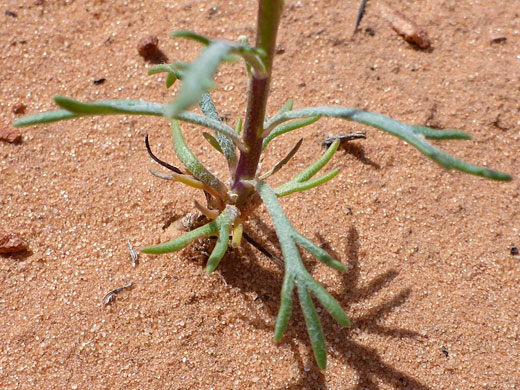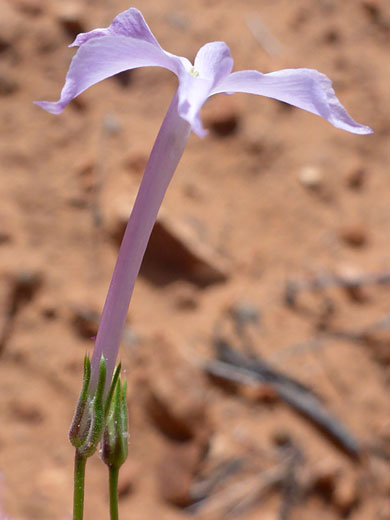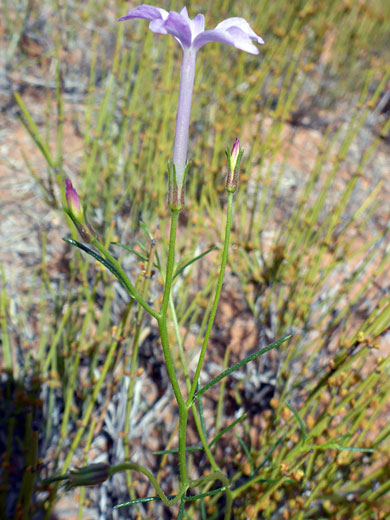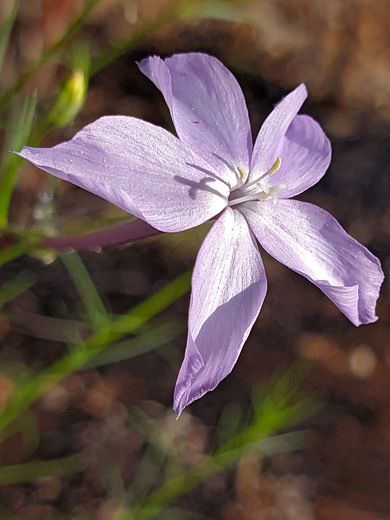Ipomopsis Longiflora, Flaxflowered Gilia
Plants > Wildflowers > Polemoniaceae > Ipomopsis Longiflora
Common names:
Flaxflowered gilia, long flowered gilia
Family:
Scientific name:
Ipomopsis longiflora
Synonym:
Gilia longiflora
Main flower color:
Range:
From Arizona and Utah, east to the Great Plains
Height:
Up to 18 inches
Habitat:
Open, sandy, semi-desert regions
Leaves:
Pinnately divided into short, thin, linear lobes
Season:
May to August
All parts of ipomopsis longiflora are thin and delicate; the wispy stems, the finely divided leaves and the attractive flowers, which are about 3 inches in length, colored, white, pale blue or lavender. When not in flower the plant is difficult to identify, merging with grass and other similar undergrowth.
The long, very slender corolla tube opens out into five lobes, which have a little point at the tip. The lower end of the tube is held by five narrow, green sepals, purplish at the base. The plant branches readily from just above the ground. Leaves grow at intervals along the branches, but those around the base tend to have withered by the time flowering begins. Stems and leaves have a covering of very short hairs.
The long, very slender corolla tube opens out into five lobes, which have a little point at the tip. The lower end of the tube is held by five narrow, green sepals, purplish at the base. The plant branches readily from just above the ground. Leaves grow at intervals along the branches, but those around the base tend to have withered by the time flowering begins. Stems and leaves have a covering of very short hairs.
All Contents © Copyright The American Southwest | Comments and Questions | Contribute | Site Map


